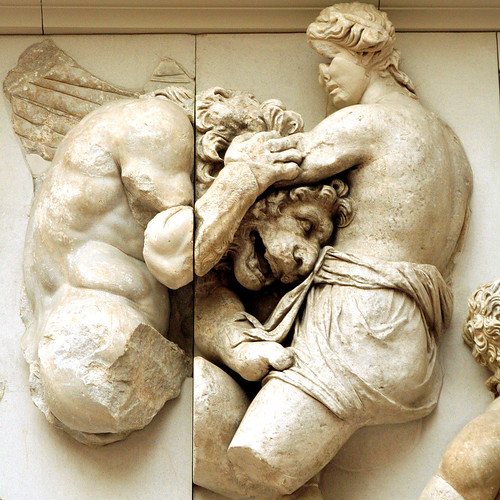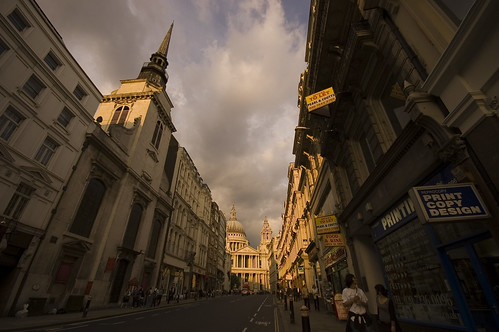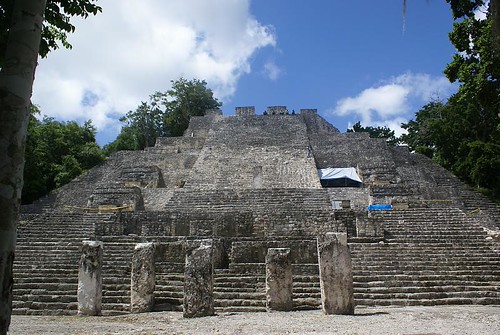Throughout the ages theyve survived intense battles, powerful natural disasters, adverse weather and incompetent archaeologists. Fascinating, beautiful, but surprisingly fragile, ancient sites are now under a new kind of attack mass tourism. Gone are the days of the Victorian explorer discovering magnificent ancient sites half buried by sand or jungle. Cheap airfares together with a plethora of guide and travel books, not to mention the Internet, encourage us to follow in the footsteps of historical figures and see ancient sites for ourselves or, in some cases, take advantage of the sunny weather and cheap booze – with a bit of…
-
-
The Colosseum may be almost 2,000 years old, but it’s certainly not letting the grass grow under its feet. New initiatives are continuing to draw tourists to the Flavian Amphitheatre, the most recent of which is the restoration of the corridors beneath the amphitheatre, where wild animals, slaves and gladiators would have waited prior to being lifted onto the the arena floor. According to this BBC report, the sum of 23 million euros is being spent on restoring the Colosseum and preparing the network of underground tunnels, which will be opened to the public later this year. The network of…
-
The Egyptians cut their multi-ton bricks so precise that, often, no mortar was needed for the construction of their monumental builds. The Romans mixed volcanic ashes in their ancient mortar, ensuring the Trajan Forum lasts for almost 20 centuries now. The ancient Chinese builders, however, opted for a more culinary solution: sticky rice mortar. Scientists have discovered the the secret behind an ancient Chinese super-strong mortar made from sticky rice, concluding it still remains the best material for restoring ancient buildings today. The mortar a paste used to bind and fill gaps between bricks, stone blocks and other construction materials…
-
Where is Atlantis? Ever since Plato mentioned the existence of the fabled island-city in the 4th century BC, archaeologists, historians and adventurers have spent much time and ink trying to chase down its origins. “Now in this island of Atlantis there was a great and wonderful empire which had rule over the whole island and several others, as well as over parts of the continent, and, besides these, subjected the parts of Libya within the columns of Heracles as far as Egypt, and of Europe as far as Tyrrhenia.” – From Plato’s Timaeus – Translation by Benjamin Jowett One of…
-
Attribution: Patrick Yeung Key Dates Please fill in Macau China Sir Robert Ho Tung Library is a public library in Macau, China. It is located in St. Augustine’s Square in the Historic Centre of Macau, a UNESCO world heritage site. The building was constructed before 1894 and was owned by Dona Carolina Cunha. Later the mansion was purchased by Hong Kong businessman Sir Robert Ho Tung in 1918 as a retreat and he lived there between 1941 and 1945. He passed away in 1955 and the building was presented to the Government for conversion to a public library in accordance…
-
Archaeologists in Mexico have uncovered a tomb inside a pyramid belonging to a king or high priest who died as many as 2,700 years ago. Three other bodies a woman also of high social status, a baby and young male adult were also found in the tomb inside the pyramid in the Chiapa de Corzo archaeological site in Chiapas district in southern Mexico. It is the earliest evidence of a Mesoamerican pyramid used as a tomb, rather than as a temple. The remains of the man, thought to be aged about 50 years and decorated in precious stones, were found…
-
Both of these monumental pieces of sculpture are beautiful, both portray good overcoming evil and the greatness of civilised man over barbarians. The Parthenon itself is awe-inspiring. If you haven’t managed to see it yet (a perfect opportunity for a holiday in Athens!), when you get up to the Acropolis and walk around, look at the Parthenon frieze, the pediments, the metopes, and then you should get ready to pick your jaw up off the floor! It is honestly one of the most magical buildings that I have ever seen. Everything about it proclaims the glory of Athens – it’s…
-
Ever wondered what lies beneath some of London’s biggest religious buildings? Cathedrals and other religious structures are often built on ancient sites that have had temples or churches built on them time and time again since early Roman times. They are urban landmarks, similar to roads and boundaries, which tend to retain their position throughout the ages, with modern town planners rebuilding on the same spot. They have been focal points for many major historical events, such as the invading Vikings burning down an early church at the site of St Paul’s, or in epoch-making events such as London’s Great…
-
The Shang Dynasty of Ancient China is known for its divinations, oracle bone inscriptions and large urban centres. Now archaeologists have a new mystery to ponder. A team of researchers excavating a 3,300 year old Shang Dynasty palace-temple complex at the ancient city of Huanbei have discovered that it was burned down after only 50 years of use. Making it more enticing is that it wasnt burnt down by an invasion force, but by the citys own rulers. They stripped the complex of all its goods before committing the act. The only thing they left behind were human sacrifices at…
-
Attribution: José Manuel Reyes F. Key Dates Thriving between 400 and 900 AD, the Mayan city of Calakmul was rediscovered from the air in 1931. Campeche Mexico Key People The city was rediscovered by biologist Cyrus L. Lundell who was working for the Mexican Exploitation Chicle Company. He reported his findings to Sylvanus Morley of the Carnegie Institute. The largest Mayan city ever to be discovered, Calakmul may once have accommodated a population of 50,000 and held sway over terroritories as far as 150km distant from it. It stands in the Calakmul Biosphere Reserve, deep in the jungle of the…








